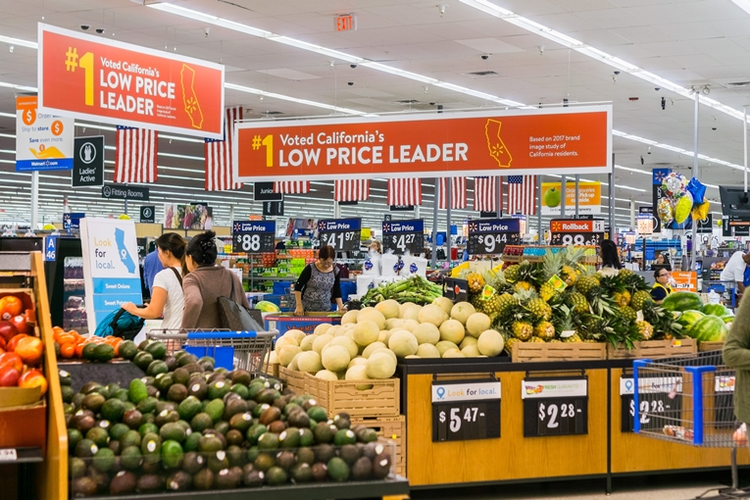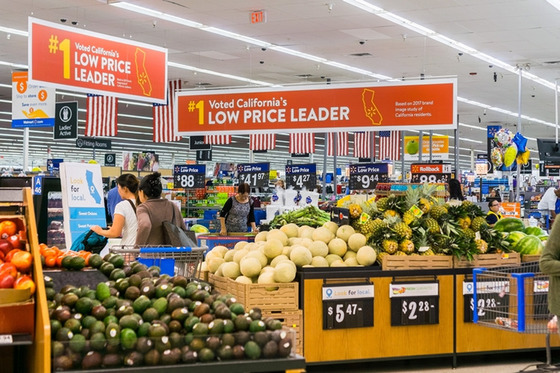Welcome to Thomas Insights — every day, we publish the latest news and analysis to keep our readers up to date on what’s happening in industry. Sign up here to get the day’s top stories delivered straight to your inbox.

It’s no secret that the coronavirus pandemic has prompted major changes in consumer behavior.
What may surprise some, however, is that Walmart successfully did what Amazon was not able to do.
Shopping Trends During COVID-19
Shoppers rushed to stockpile essential items throughout March. In particular, they emptied supermarket shelves at unprecedented rates amid fears that food supply chains were on the brink of collapse. Since then, with many cities in lockdown and others encouraging social distancing whenever possible, more people are avoiding trips to grocery stores and opting to use online delivery services instead.
In March and April, almost 25% of consumers did their grocery shopping online compared with 6% in 2019. In early 2020, eMarketer predicted that online grocery sales would grow to $32 billion this year, but sales are far exceeding that projection — the number of online grocery shoppers surged from 16 million in August 2019 to 40 million in April 2020.
What Does This Shift in Consumer Behavior Mean for U.S. Retailers?
As expected, these changes have resulted in a huge boom in sales for many U.S. retailers.
Walmart, which has around 4,700 stores in the U.S. saw its revenue grow by $10.7 billion in the first quarter, with online sales increasing by 74%. In April, The Kroger Co. reported a 30% increase in identical-store sales for March, and Target revealed its digital sales have more than doubled compared to this time last year.
These statistics aren’t necessarily reflected in companies’ profits. While non-essential retailers have been among the hardest hit by COVID-19, grocery stores have struggled to increase their profits in Q1 as a result of the major operational adjustments — including additional supply-chain costs, employee bonuses, and recruitment — required to meet increased customer demand.
Amazon, for example, saw its e-commerce business’ operating income in North America fall from $2.3 billion to $1.3 billion despite achieving a 29% growth in sales. The company heavily invested in new employees at the beginning of the coronavirus crisis and had confirmed it would pay $700 million in bonuses through May 16. Jeff Bezos commented that Amazon’s projected $4 billion of operating profit in Q2 will likely be used in its entirety for coronavirus expenses such as shipping costs and maintaining employee safety.
Walmart is the only retailer that has successfully managed to generate net income growth in Q1 despite investing almost $900 million in coronavirus-related expenses, which includes cash bonuses and expanded benefits as well as the hiring of 200,000 additional employees.
In leveraging operating expenses with strong sales growth, Walmart has successfully done what Amazon could not and absorbed its additional costs — and then some.
Why Is Walmart So Well-positioned to Tackle the Impact of COVID-19?
Several factors explain Walmart’s ability to thrive in a time of crisis.
- Groceries are Walmart’s top earner — The vast majority of Walmart’s sales are generated from groceries rather than more expensive, non-essential items. With many cafes and restaurants closed and their recovery expected to be slow, grocery stores like Walmart are taking a huge additional cut of Americans’ food budget. Meanwhile, retailers like Target, who typically benefit from higher profit margins on sales of home goods and clothing, have suffered a major hit to their bottom line.
- Walmart’s e-commerce and business model are strong — Walmart’s operating costs were barely impacted by the coronavirus, a reflection of their recession-proof business model. The retailer’s reputation for low prices gives it a competitive advantage, especially during a time when consumers are eager to cut back on their spending.
- Walmart was quick to scale–up e-commerce — Walmart’s CEO Doug McMillon cited the company’s strategy to be an omnichannel retailer as the key to its success. Last month, for example, the retailer began trialing a new delivery service called Express, which can fulfill online customer orders within two hours.
- Walmart stores can be used as mini fulfillment centers — Walmart has begun using an additional 2,400 stores to ship its online orders, further enabling its ability to provide fast-turnarounds on customer orders.
New shopping habits are likely to remain even when the COVID-19 crisis is over, which means stores such as Walmart must continue to provide customers with the flexibility to shop online or in person. The pressures in early 2020 that led the retailer to expand its capacity and launch new delivery services will no doubt stand Walmart in good stead as it continues to battle its biggest rival, Amazon, for e-commerce sales.
Image Credit: Sundry Photography/Shutterstock.com


